The SandForce Roundup: Corsair, Kingston, Patriot, OCZ, OWC & MemoRight SSDs Compared
by Anand Lal Shimpi on August 11, 2011 12:01 AM ESTDiffering Firmwares
OCZ's exclusive on the SF-2281 has finally lifted and now we're beginning to see an influx of second generation SandForce drives from other vendors. Make no mistake, although these drives may look different, have creative new names and different PCBs - they should all perform the same if you know what you're comparing.
OCZ sells three lines of SF-2281 based drives: Vertex, Agility and Solid. The Vertex 3 uses synchronous NAND (read: faster), while the Agility 3 and Solid 3 use slower asynchronous NAND.
Other companies are following suit. Asynchronous NAND is more readily available and cheaper, so don't be surprised to find it on drives. So far everyone seems to be following OCZ's footsteps and creating separate lines for the synchronous vs. asynchronous stuff.
The table below should break it down for you:
| SandForce SF-2281 SSD Comparison | ||||||
| Product | NAND Type | Capacities Available | Latest FW Available | Price for 120GB Drive | ||
| Corsair Force GT | Sync IMFT | 60GB, 120GB, 240GB | Corsair v1.3 (SF v3.20?) | $248.49 | ||
| Kingston HyperX | Sync IMFT | 120GB, 240GB | SF v3.20 | $269.99 | ||
| MemoRight FTM Plus | Sync IMFT | 60GB, 120GB, 240GB, 480GB | MR v1.3.1 | N/A | ||
| OCZ Agility 3 | Async IMFT | 60GB, 120GB, 240GB | OCZ v2.11 (SF v3.20) |
$209.99 | ||
| OCZ Vertex 3 | Sync IMFT | 60GB, 120GB, 240GB, 480GB | OCZ v2.11 (SF v3.20) |
$254.99 | ||
| OCZ Vertex 3 MAX IOPS | Toggle | 120GB, 240GB | OCZ v2.11 (SF v3.20) |
$284.99 | ||
| OWC ME Pro 6G | Toggle | 120GB, 240GB, 480GB | SF v3.19 | $279.99 | ||
| OWC ME Pro 6G | Sync IMFT | 120GB, 240GB, 480GB | SF v3.19 | $279.99 | ||
| Patriot Pyro | Async IMFT | 60GB, 120GB, 240GB | SF v3.19 | $209.99 | ||
| Patriot Wildfire | Toggle | 120GB, 240GB, 480GB | SF v3.19 | $284.99 | ||
The four drives we're looking at today are a mixture of synchronous and asynchronous. The newly announced Patriot Pyro uses async NAND while everything else uses some form of synchronous Flash memory. OWC recently switched to using 32nm Toggle NAND in an effort to boost performance to OCZ MAX IOPS levels.
SandForce delivers firmware to all of its partners, however the schedules don't always match up. OCZ gets first dibs and renames its firmware to avoid direct comparisons to other drives. There are cases where OCZ may have some unique features in its firmwares but I don't believe that's the case with its latest revision.
Corsair and MemoRight do the same renaming, while the rest of the players stick to the default SandForce firmware version numbers. Everyone that shipped us drives seems to be sticking to either the latest firmware revision (3.20) or the one prior to it (3.19). Performance hasn't changed too much between all of these revisions, the majority of the modifications are there to squash this BSOD issue.
Corsair Force GT
The Force GT is Corsair's answer to OCZ's Vertex 3. The GT ships with a custom PCB design and is outfitted with IMFT (Micron branded) NAND running in synchronous mode. The 120GB sample we were sent for review has 16 NAND packages each with one 8GB MLC NAND die. Corsair just released its first firmware update for the Force GT, bringing it up to version 1.3 in Corsair-speak. Given the timing of the release, I'm going to assume this is Corsair's rebrand of the SandForce 3.20 firmware.
The Force GT is the cheapest 120GB SF-2281 based drive with synchronous NAND in the roundup. The drive comes with a 3 year warranty from Corsair.
Kingston HyperX
As Kingston's first SandForce SSD, the HyperX looks great. Although it doesn't really matter once you get it in the system, the HyperX enclosure has the most heft to it out of all of the SF-2281 drives we've reviewed. Part of the added weight comes from the two thermal pads that line the top and bottom of the case:
Kingston annoyingly uses 1.5mm hollow hex screws to keep the drive together, our biggest complaint from a physical standpoint. As a standalone drive the HyperX is our second most expensive here at $269.99 for 120GB.
The drive ships with a custom PCB and the latest SandForce firmware (3.20). Kingston sent along the upgrade kit which includes a 3.5" drive sled, USB enclosure, SATA cable and Kingston screwdriver:
MemoRight FTM Plus
We haven't had a MemoRight drive in for review since the early days of SSDs on AnandTech. The FTM Plus is a vanilla SF-2281 drive with SandForce's 3.19 firmware. The PCB design is custom although the NAND configuration is pretty standard. We got a 240GB drive in for review with 16 NAND devices and two 8GB 25nm IMFT die per chip.
OWC Mercury Extreme Pro 6G
The last time we reviewed OWC's Mercury Extreme Pro 6G we were a bit surprised by the presence of a rework on a shipping SSD. Since then a couple of things have changed. For starters, the rework is gone as you can see from the images above. While these drives use standard 25nm IMFT synchronous NAND, OWC has recently switched over to 32nm Toggle NAND - giving the Mercury Extreme Pro 6G the same performance as the MAX IOPS drives from OCZ or the Patriot Wildfire. We don't have the Toggle NAND drives in yet but I'd expect performance similar to the MAX IOPS for the updated drives. The branding and pricing haven't changed, just the performance.
The Mercury Extreme Pro 6G is offered with a 5 year warranty from OWC. It's also the most expensive SF-2281 based on IMFT NAND with a 120GB drive costing $279.99.
Patriot Pyro
While the Wildfire is Patriot's high-end SF-2281 offering, the Pyro is its more cost effective solution. The Pyro's savings come courtesy of its asynchronous NAND, putting it on par with an Agility 3. The Wildfire by comparison is akin to OCZ's MAX IOPS drives. Patriot uses the same PCB layout as OWC. The drive ships with firmware revision 3.19 and a 3-year warranty.
The Test
| CPU | Intel Core i7 2600K running at 3.4GHz (Turbo & EIST Disabled) - for AT SB 2011, AS SSD & ATTO |
| Motherboard: | Intel H67 Motherboard |
| Chipset: | Intel H67 |
| Chipset Drivers: | Intel 9.1.1.1015 + Intel RST 10.2 |
| Memory: | Corsair Vengeance DDR3-1333 2 x 2GB (7-7-7-20) |
| Video Card: | eVGA GeForce GTX 285 |
| Video Drivers: | NVIDIA ForceWare 190.38 64-bit |
| Desktop Resolution: | 1920 x 1200 |
| OS: | Windows 7 x64 |


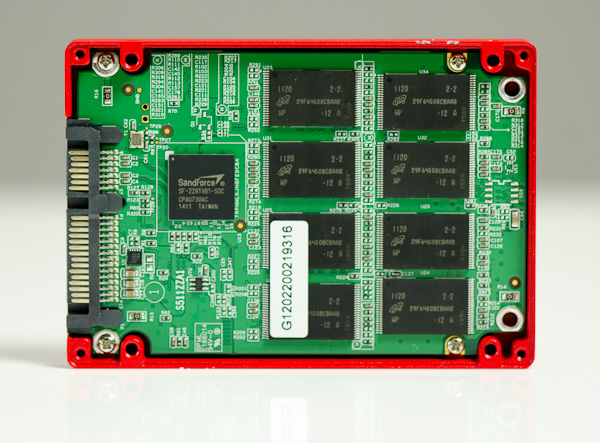



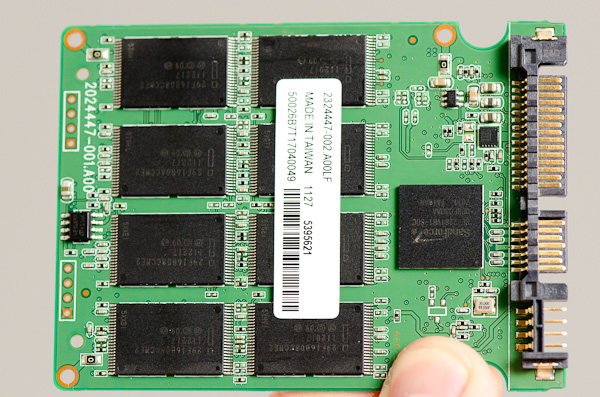
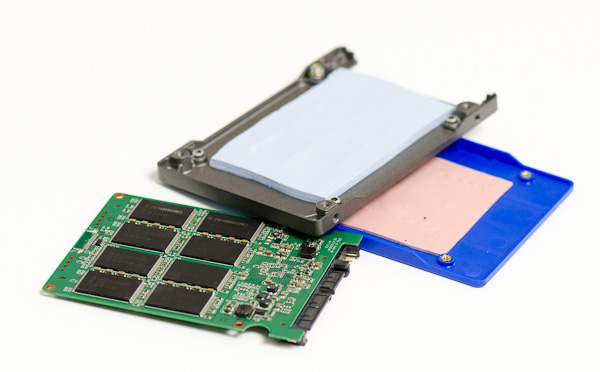
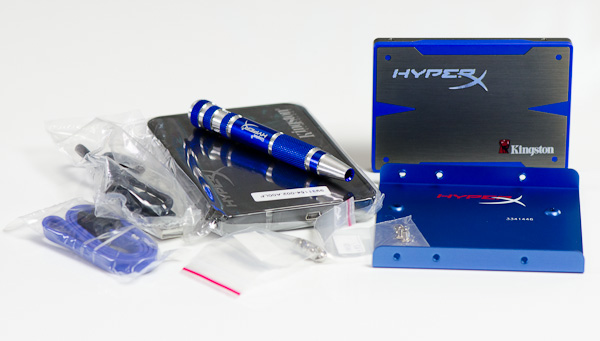






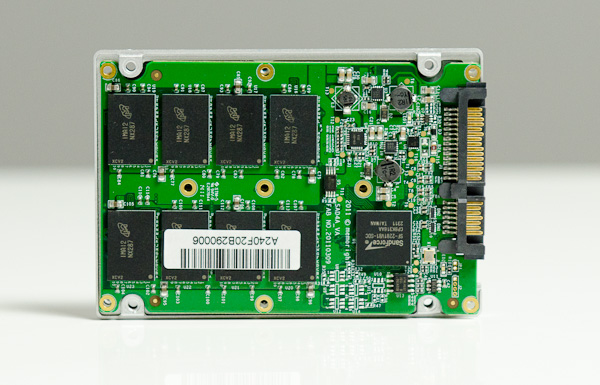




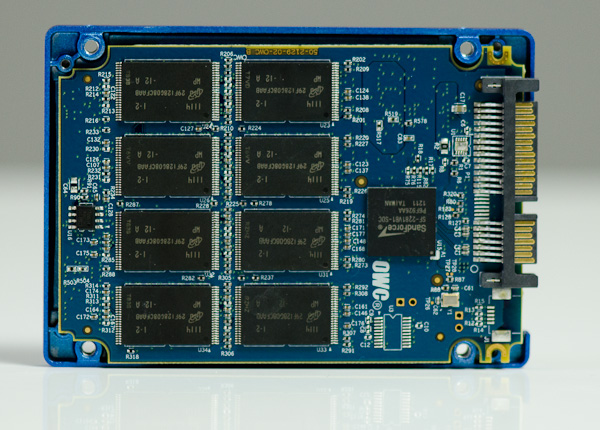
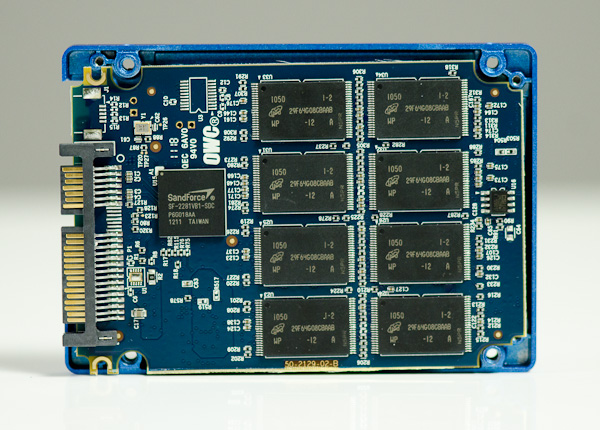


















90 Comments
View All Comments
imaheadcase - Thursday, August 11, 2011 - link
I was wondering the same thing...this seems to happen a lot lately with roundups.Anand Lal Shimpi - Thursday, August 11, 2011 - link
My apologies! An older version of the graphs made its way live, I've updated all of the charts :)Take care,
Anand
Nickel020 - Thursday, August 11, 2011 - link
I always thought the difference in price between a 25nm SF1200 drive and a synchronous SF2200 was mainly due to the cost of the controller, but since you put the controller at $25, it's the NAND in the SF1200 that must be cheaper.A Corsair F115 with synchronous 25nm (G08CAMDB)* costs $170, a Force 3 with asynchronous NAND costs $185 and a Force GT with synchronous NAND costs $245. The synchronous NAND in the F115 must be way cheaper than the synchronous in the Force GT thus.
I'm guessing the SF2200 is more expensive than the SF1200, so that basically means that following your cost breakdown, the asynchronous NAND in drives such as the Force 3 or Agility 3 must be similarly priced as the synchronous NAND in the 25nm SF1200 drives.
Why is the synchronous in the SF1200 drives so much cheaper than the one in the SF1200 drives? Could you decipher the the whole part number?
*I'm assuming the F115 uses the same NAND as the first Vertex 2s with 25nm:
http://www.tomshardware.de/ocz-vertex-2-25nm-ssd,t...
Coup27 - Thursday, August 11, 2011 - link
If the current state of affairs are due to the reasons you have outlined in the first couple of paragraphs then this has been brought on by the manufacturers themselves.All the manufacturers have tried to bring costs down as much as possible for obvious reasons, but they should not have brought them down so low that they sacrifice validation and testing to get there.
The benefits SSD's have over HDD's are enormous and I am sure I am not alone when I say that I would quite happily pay an additional 15-25% than the current prices for my drive knowing that it works, full stop.
QChronoD - Thursday, August 11, 2011 - link
I understand sync and async, but not really sure what toggle means. Is it safe to assume that means that it can switch between the two modes? Or is there something else that is special about it?Nickel020 - Thursday, August 11, 2011 - link
It's a different NAND standard. Intel/Micron NAND follows the ONFI standard (which they developed afaik), Toggle is another standard that's developed by Samsung and others, the Toggle NAND in SF2281 SSDs is 34nm from Toshiba.If I understand it correctly, the difference is mainly the interface, with which the MLC cells are connected to the controller. Both are MLC though, the basic principle on which they are based is the same.
The Toggle NAND SSDs are generally faster, because 34nm means less density, more NAND dies, and thus more interleaving. Same thing causes bigger SSDs to be faster than smaller ones (read Anands other recent articles if you want to know more).
Conscript - Thursday, August 11, 2011 - link
is there a reason the same products aren't in every graph? Corsair GT seems to be missing from quite a few?Anand Lal Shimpi - Thursday, August 11, 2011 - link
Fixed :)Take care,
Anand
Shadowmaster625 - Thursday, August 11, 2011 - link
Is there a way you can force the drive to run at SATA2 speeds to see if that eliminates the lockups?irev210 - Thursday, August 11, 2011 - link
You open this SandForce article on Intel 320 SSDs firmware bug.I love how the BSOD is a page two reference.
Anand, your OCZ/sandforce bias bleeds through pretty hard. I hope you can be a bit more objective with your reports moving forward.
The speed difference between SSDs at this point is pretty trivial. As you continue to hammer about reliability, you never even reviewed the Samsung 470, rarely talk about the Crucial C300/M4, and Toshiba seems to be an afterthought.
At least tomshardware made an attempt to look at SSD reliability.
Bottom line, it seems like sandforce-driven ssds have the biggest number of issues, yet you still recommend them. You say "well I never really experience the issues" but just because you don't doesn't mean that it is the most reliable drive.
I think you should work a little harder at focusing on reliability studies instead of performance metrics. For most users, it taking 1.53 seconds or 1.54 seconds to open an application is pretty irrelevant if SSD A is 10x more likely to fail over SSD B.